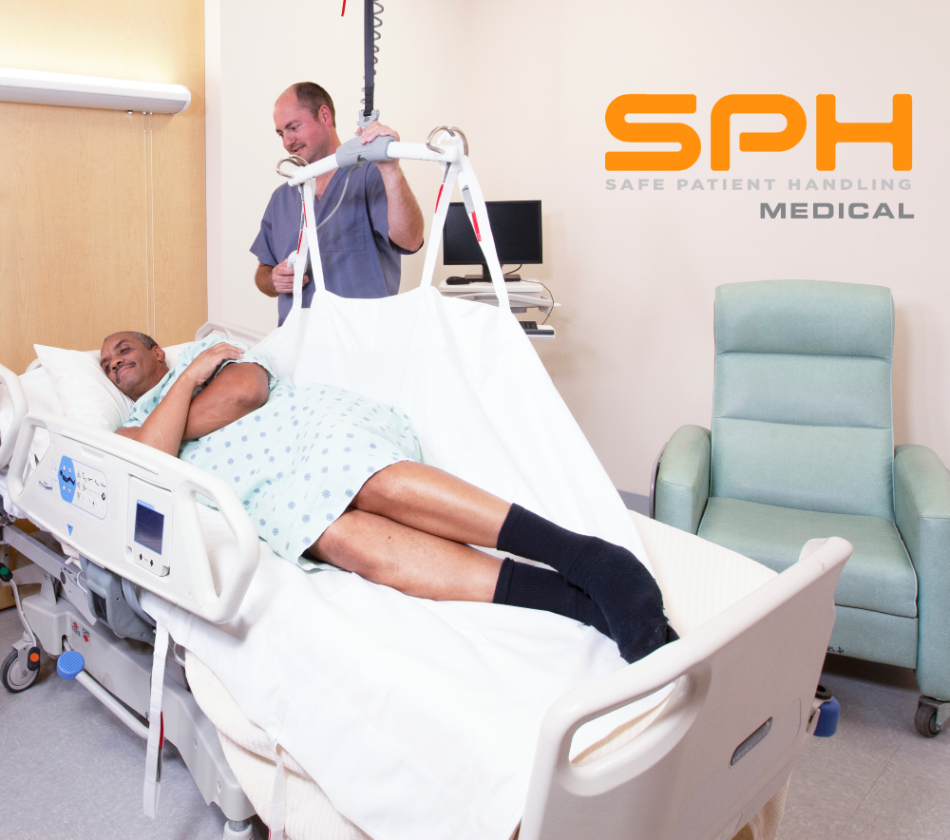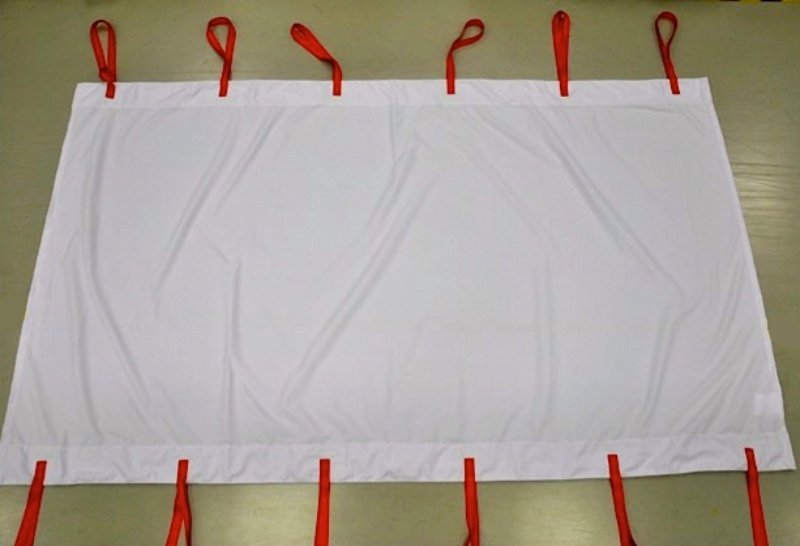Elevating Care: How Breathable Repositioning Sheets Transform Safety
Manual patient repositioning is a leading cause of career-ending injuries for nursing staff and a significant contributor to pressure ulcer development in patients. For decades, healthcare professionals have been asked to perform high-risk manual lifts, placing immense strain on their bodies. Simultaneously, immobile patients have suffered from painful and costly pressure injuries due to the challenges of frequent turning. Today, this dangerous compromise is no longer necessary. The integrated use of breathable repositioning sheets with overhead lifts creates a profoundly safer care environment, protecting staff and patients alike.
This article will detail how this innovative system provides a dual benefit: it dramatically reduces nurse injury rates while drastically improving patient skin integrity. By adopting this technology, facilities can align with the highest standards of Safe Patient Handling (SPH). This fosters a true culture of safety that protects their most valuable assets—their caregivers and the patients they serve.
The Critical Link Between Patient Repositioning and Staff Injury
For too long, the physical demands of patient care have been accepted as “part of the job.” The reality is that manual handling exposes nurses to unacceptable risks and directly impacts patient outcomes.
The Dangers of Manual Lifting
The biomechanical strain placed on a nurse’s body during a manual patient turn, boost, or transfer is immense. Research from OHSU’s Biodynamics Lab confirms that the forces exerted on the spine during these tasks far exceed safe limits, leading to a high prevalence of musculoskeletal injuries (MSIs). According to the U.S. Bureau of Labor Statistics, healthcare support workers, including nursing assistants, experience some of the highest rates of nonfatal occupational injuries, with overexertion and bodily reaction being a primary cause. These are not minor incidents; they are career-altering injuries that lead to chronic pain, lost workdays, and high workers’ compensation costs, ultimately driving talented professionals from the bedside.
The Patient Side of the Equation: Pressure Ulcers
The physical difficulty of manual repositioning creates a barrier to providing optimal patient care. When staff are fatigued, injured, or short-handed, the frequency of patient turning can decrease. This directly increases the incidence of hospital-acquired pressure injuries (HAPIs), which are not only painful for the patient but also incredibly costly for the facility. HAPIs lead to increased lengths of stay, require intensive wound care, and are considered a “never event” by many payers, placing a significant financial burden on the organization.
The SPH Solution: Repositioning Sheets and Overhead Lifts
An effective Safe Patient Handling program eliminates hazardous manual tasks wherever possible. The combination of breathable repositioning sheets and overhead lifts provides the ultimate solution for patient turning and boosting, removing the caregiver from the equation of lifting force.
What Are Breathable Repositioning Sheets?
These are not standard draw sheets. Breathable repositioning sheets are single-patient use sheets engineered from high-strength, low-friction material designed to stay under the patient. Their key feature is a breathable construction that allows air to circulate, protecting the patient’s skin microclimate by managing heat and moisture—a critical factor in pressure ulcer prevention. These sheets are incredibly strong, with typical weight capacities of up to 1000 lbs, making them a reliable solution for a diverse patient population, including bariatric patients.
The Power of Integration with Overhead Lifts
The true innovation lies in how these sheets seamlessly integrate with existing ceiling and mobile patient lift systems. The sheets feature durable straps that connect directly to the lift’s spreader bar. This allows a single caregiver to safely and smoothly reposition, turn, or boost any patient. The lift does all the work, completely eliminating the manual lifting force required from the nurse. This system is in perfect alignment with AORN and ANA SPHM standards, which call for the elimination of manual patient handling.
Unpacking the Dual Benefits: A Win-Win for Nurses and Patients
By implementing this integrated system, facilities can achieve a powerful return on investment through improved staff safety and enhanced patient outcomes.
Enhancing Nurse Safety and Workflow
The most immediate benefit is the dramatic reduction in physical strain on nursing staff. By removing the need for manual lifting during repositioning, the risk of back, neck, and shoulder injuries plummets. This leads to fewer lost workdays, a reduction in workers’ compensation claims, and improved staff morale and retention. The efficiency gains are also substantial. A task that once required three or four nurses to coordinate can now be performed safely by a single caregiver, freeing up valuable staff to attend to other critical patient needs.
Improving Patient Outcomes and Skin Integrity
For the patient, the benefits are equally profound. The breathable fabric of the repositioning sheet is essential for protecting skin integrity. It helps dissipate heat and moisture, preventing the skin maceration that often precedes pressure injury development. Furthermore, the frictionless movement provided by the sheet and lift combination virtually eliminates the risk of shear and friction. These are two primary forces that cause skin tears and deep tissue injury. Facilities that adopt this system often report a measurable reduction in their HAPI rates. And also importantly, improved patient satisfaction scores and significant cost savings.
Breathable repositioning sheets and overhead lifts is a combined system. And itis not just an equipment upgrade; it is a fundamental shift toward a culture of safety. It provides a comprehensive solution that simultaneously protects caregivers from career-ending injuries and patients from painful, costly pressure ulcers. By investing in this breathable repositioning sheets, healthcare organizations make a definitive statement. That statement is that the well-being of their staff and the safety of their patients are both top priorities.
Is your facility ready to elevate its Safe Patient Handling program and protect its most valuable assets?




